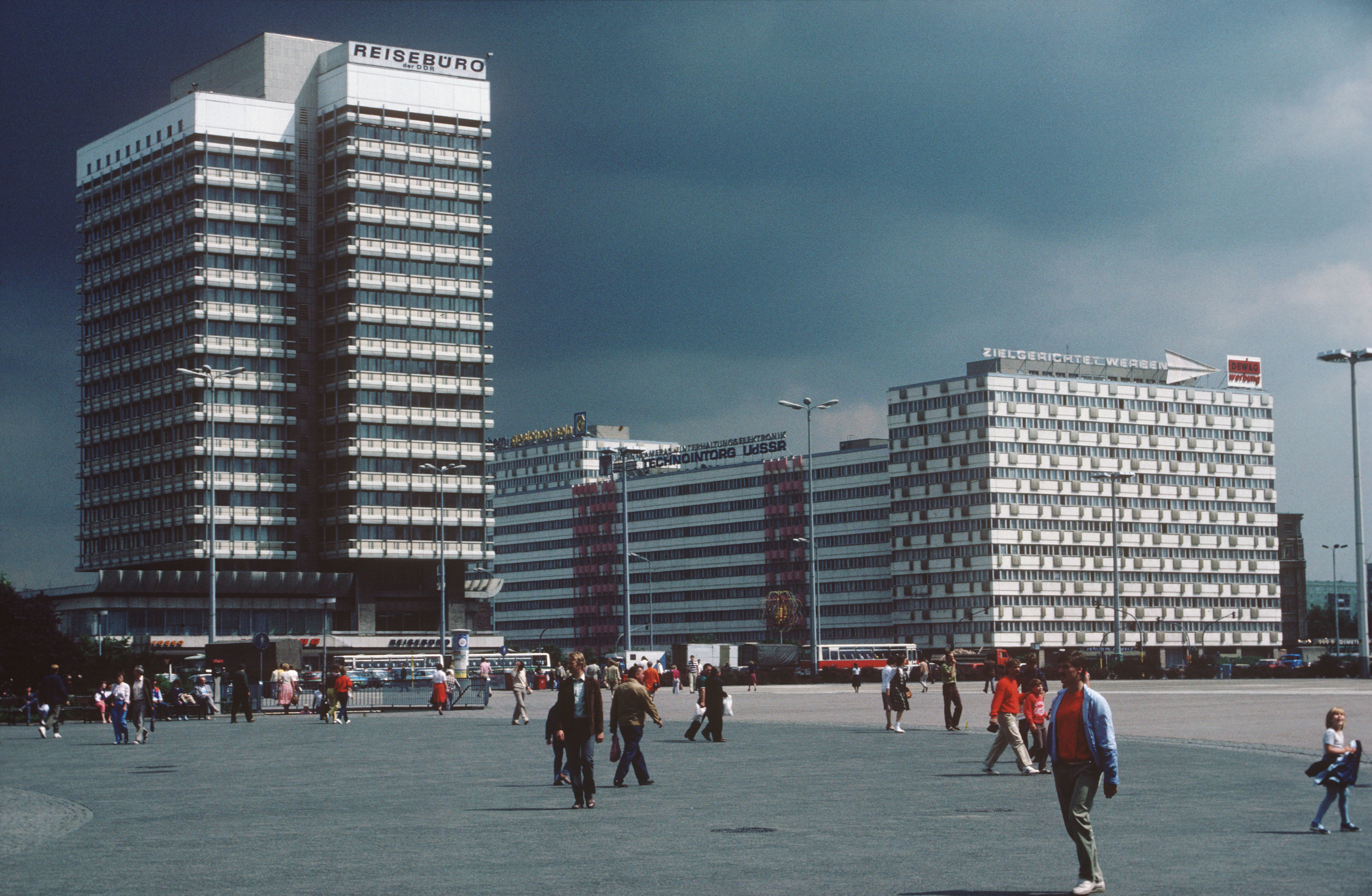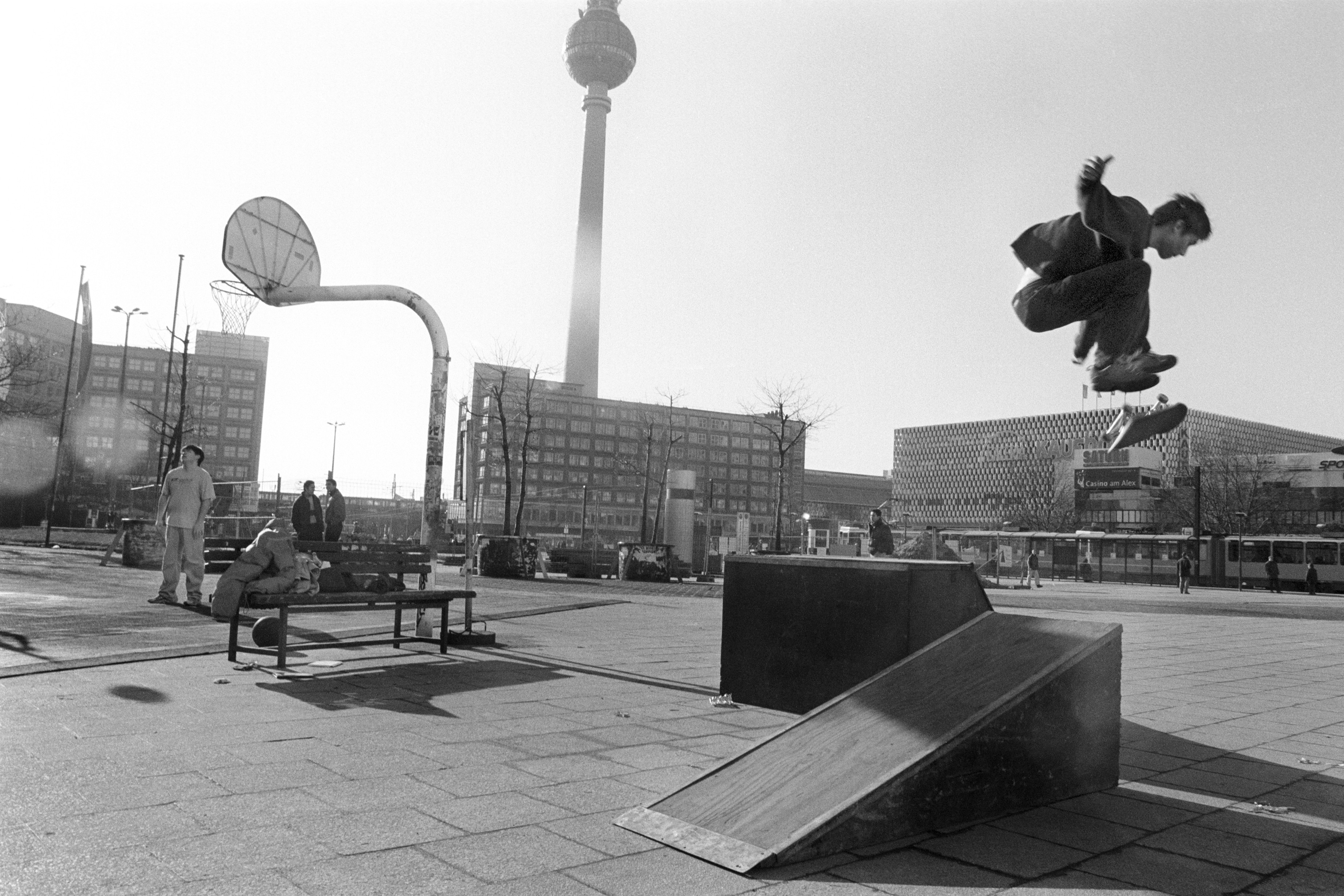Harald Hauswald—
Beyond the wall: Cold War Berlin in retrospect.
Essay
Published by Photomonitor
September 2020.

© Harald Hauswald/OSTKREUZ
The historical and political division of Cold War-era Germany and its capital Berlin is one that, were it not for its relics, could be near impossible to imagine as a reality that occurred in the same streets, today so full of unity, hedonism and freedom. The remains of its infamous, now spliced and decorated wall, or the abandoned ominous watchtowers left across the city, serve as stern reminders of a time where the despair of post-Second World War was not only palpable but inescapable. The systematic denial of citizens (especially those within the newly formed East Germany) to be able to make sense of the social, financial and psychological traumas that occurred, meant that societal progress and liberation were but distant dreams. It was under these very conditions that Saxony-born documentary photographer, co-founder of German photo agency Ostkreuz and previous citizen of the GDR (German Democratic Republic) Harald Hauswald, explored, lived and worked, creating an archive of images that span across more than forty years and thousands of rolls of films. Hauswald’s cynicism on the success of the GDR as a nation was unerring— ‘This weird form of communism’s comical attempt was doomed from the start’, he said on the subject, and ultimately he was right. What followed was a failed Soviet attempt at a utopia, in which censorship and policing were swift and severe, with the prospect of escape or defection constantly weighted with a plethora of punishments, including death. It was this reality that Hauswald knew so well, and served as the playing field in which his life’s work as a documentarian unfolded; a place where balancing the creation of photos with the evasion of Stasi officers was a daily routine, and the smuggling of his work to West Berlin, the only way for audiences in the world beyond to experience his daily realities.

© Harald Hauswald/OSTKREUZ
It is perhaps for these reasons why Hauswald’s archive of images are able to remain such a momentous, insightful and important global resource on the topics of not only what it meant to be living during Cold War-era Germany, but to also have survived the conditions at the time, and why his images still hold such currency even today. Working predominantly in black and white, his trademark 35mm images are famously imperfect, obsessive in their sheer volume and unpretentious in their interaction, fun and proximity to subjects. Hauswald’s images presented a society otherwise hidden, that although full of poverty, mass-surveillance, isolation and financial ruin, did still feature some of the daily mundanities of everyday life that the rest of the world were familiar with. More importantly however, Hauswald was often able to show a humanity and an intimacy within the population, even in their darkest hours; scenes of sentimentality, communal spirit, humour and occasionally, absurdity are all present within his work and remain some of the reasons why it is so enjoyable to view. One moment you could be looking at a passing group-portrait of half-naked, drunk men cheering into the lens, the other, looking at an elephant being greeted by a busy street full of people in the city centre. Elderly people slow-dancing at the hand of an equally elderly double-bass player, could easily be followed by another photo of a road-side fire surrounded by a crowd of bemused police officers looking on tensely. The image of a farmer carrying a calf across a flooded river could be just behind a dusky image of a counter-GDR protest: a crowd of hundreds of people marching on in resistance.

© Harald Hauswald/OSTKREUZ
Generally choosing to waive the likes of technical consistency, accuracy or form does make his work both approachable and relatable, but in the same breath, at times, can come across as scrappy or naive. Unlike other twentieth century documentary photographers; for example Robert Frank with his dramatic, shadow-laden and pristine images, or the kitsch, observant and punny work of Martin Parr, Hauswald’s seems to evade such a distinction, traversing several styles within his archive, ranging from that of event photographer to local historian or even seasoned amateur simply documenting subjects who could very well be close friends or family members. His work, rightly or wrongly, follows few formulas or rules; framing, focus, shutter speed and lighting seem to be secondary considerations in his work, which is at times as fascinating as it is frustrating, especially given the significance of many of his subjects and scenes. However it is indeed these removal of limitations which allowed him to create work so freely and attentively in the volume that he did; relentlessly, closely and without the yoke of creative bureaucracy.
Interestingly, the concept of community plays a central role within the work of Hauswald, to such an extent that it could be argued that his most famed works are owed to the gathering of people. It goes without saying that during a time of such extreme social isolation for citizens, not only from the wider world but also from the friends and relatives left on the other side of the Berlin wall, gatherings themselves became an extremely powerful act of defiance, well-being and hope. With that being the case, the events that he frequented – hundreds of sporting events, music festivals and social club dances – were arguably as important as the protests, hooligan fights, demonstrations and riots, in forging subcultures, galvanising unity and helping re-establishing a sense of identity. Judging by the interactions between Hauswald and his subjects, it was clear that it was under these crowded situations where he was able to thrive. Whether photographing animated strangers playing up to the camera, meek subjects posing for a portrait, dilapidated vacant lots, or passing commuters sitting adjacent to him on public transport, Hauswald was able to transcend being just a documentarian; he was a participant within their worlds, and his subjects often treated him as such. Even when working from a distance, there remains an immersion, a pride and a feeling that he is in fact sharing something with audiences, unique, as an insider immortalising the now unified, yet complex and culturally rich nation, as strangely beautiful as it was and still is.